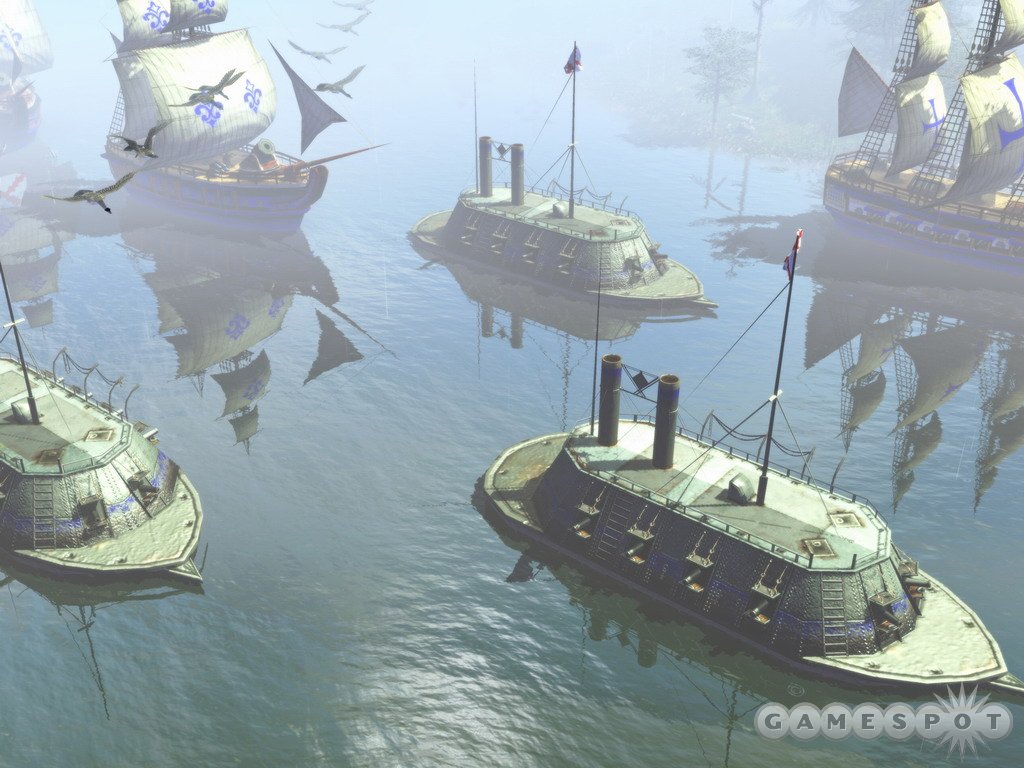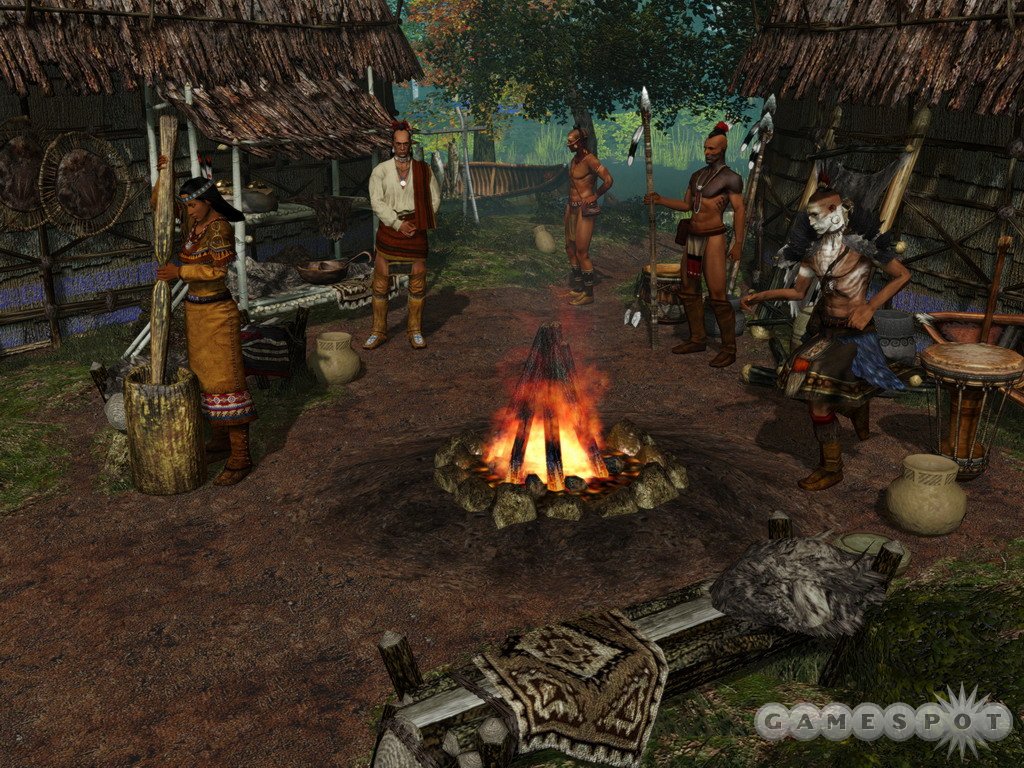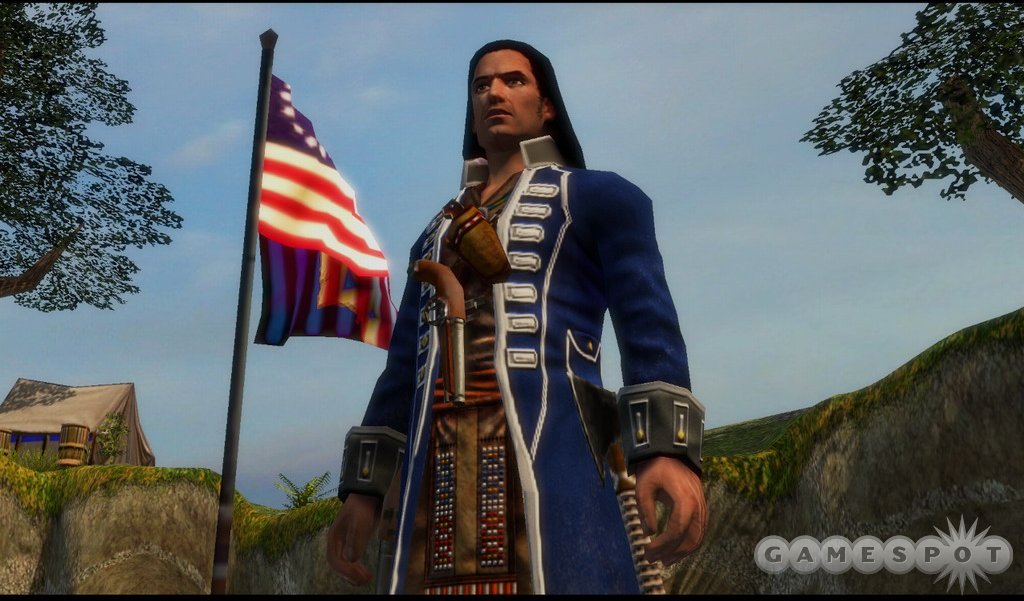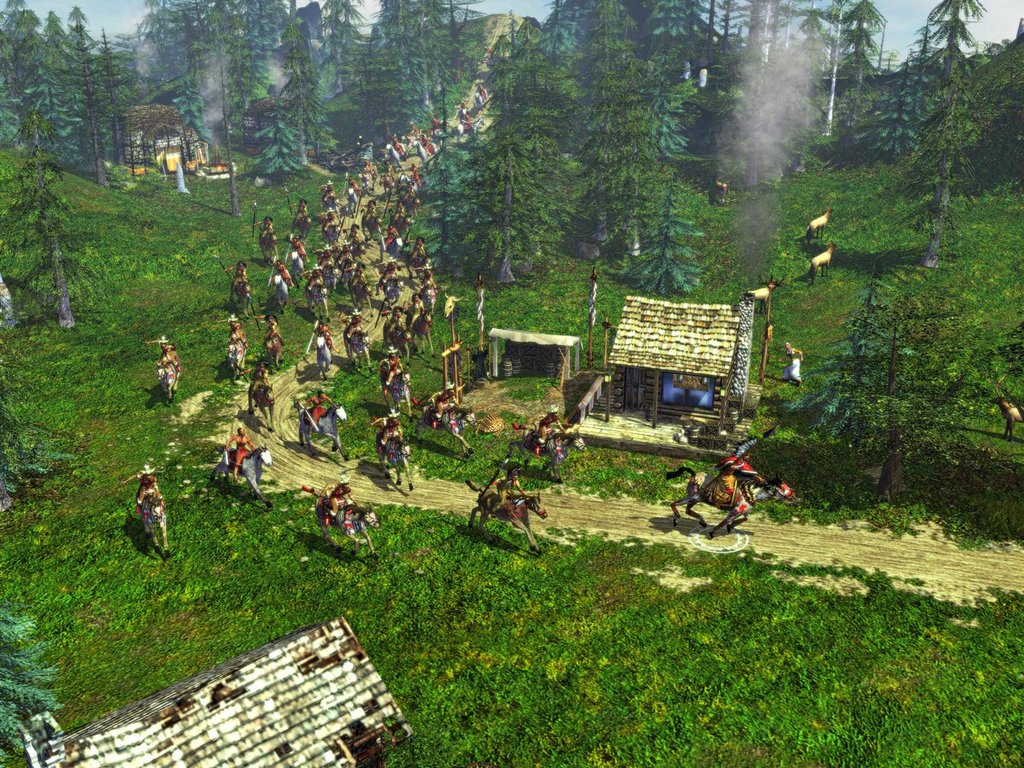Age of Empires III: The WarChiefs Updated Q&A - Details on the New Revolution Feature, WarChiefs, and More
Lead designer Sandy Petersen returns to answer our latest questions regarding the expansion pack to last year's hit real-time strategy game, Age of Empires III.
As the latest chapter in the best-selling real-time strategy series, Age of Empires III explored the age of colonialism when European powers settled the Americas, and then fought it out with one another. You take command of any of the major powers and attempt to conquer the New World the old-fashioned way by collecting resources, constructing buildings, and raising armies. Microsoft and Ensemble will explore this era further with Age of Empires III: The WarChiefs, the upcoming expansion pack that not only adds in new content for the existing European civilizations, but also lets you play as the Native Americans for the first time. For the latest details, we caught up with lead designer Sandy Petersen, and he filled us in on some interesting new features. Some might even call them "revolutionary." The WarChiefs is scheduled for release later this year.

GameSpot: We understand that the new WarChief unit is both an explorer and a fighting unit, based on a real-world historical figure. How many WarChiefs does each Native American tribe get, and how were they chosen? We know that the WarChief unit stems partly from the feeling that the European explorers in Age of Empires III quickly became obsolete over the course of the game, so what abilities does this new unit possess, and how will they add to the game?
Sandy Petersen: Each tribe gets only a single WarChief, and while they are based on the actions of famous historical figures, the WarChief unit itself, like the European explorers, can be named by the players. We do have historical personalities for the various natives of course, as we did with the Europeans. Each nation's WarChief has a sort of leadership effect, like an aura, which boosts all nearby units in a manner specific to that nation. The Sioux WarChief, for instance, increases nearby units' speed. WarChiefs also have other special abilities, which are highly useful. Early in the game they have the nature friendship ability, which lets them tame treasure guardians, such as bears, wolves, or even outlaws. The native nations have technologies and tribal council shipments to further boost the WarChief.
GS: Native American factions don't have home cities like European civilizations, but they do have tribal councils. What are the differences between cities and tribal councils? How are councils limited, and what unique abilities do they possess that cities don't?
SP: Tribal councils function quite similarly to cities, though, of course, they have very different shipments. For instance, the Sioux can send herds of buffalo for their hunters. The Iroquois have special combination shipments based on each of the six Iroquois nations. For example, the Onondaga nation ships tomahawk warriors along with crates of wood.
GS: Tell us about the five new minor Native American tribes in the game. We understand that one of them is the Klamath from the Pacific Northwest, but who are the others? Are they treated like Native American tribes were treated in the core game, in that they're basically outposts with which you can set up trading posts and unit recruitment points?
SP: The minor tribes are treated exactly as the existing Native Americans in Age of Empires III. Not all of the minor tribes have been announced yet, but two that I'd like to mention are the Cheyenne and the Huron.
GS: Aside from covering a different area in the western half of the Americas, what are some of the differences in WarChiefs' maps from those of the original game? Are they bigger, more complex, and/or more detailed? How many new maps will the expansion offer?

SP: We have quite a few new maps in the expansion. In each case, we've tried to add some new interesting strategic feature. The Andes map has a large cluster of native settlements at one end that can add great power to the conqueror. The Northwest Territory map is interesting in that most of the action takes place on the mainland, but there is a large island off the coast that can support a large base, so players who "go navy" might be able to parlay this into an advantage.
GS: The existing European civilizations will each receive new content. What sorts of additions are being made, and how will they change the game? What's your favorite new European content and why?
SP: The Europeans are getting an enormous amount of new material. There is a special new feature for European civs only. It is a new way to win the game and we're very excited about it. Revolution is an alternative to the game's Imperial Age. If you are in the fourth age and are a European nation, you can spend resources to research the revolution. When you do so, you get to choose from two different historical New World revolutionaries, such as Simon Bolivar, Toussaint Louverture, or Father Hidalgo. Each revolutionary hero provides a different advantage.
When your revolution is complete, your flag changes to a new one, your home city is replaced with a revolutionary city (with new shipments!), and all of your settlers transform into colonial militia. For the rest of the game, you can no longer train settlers, and your economy basically slides to a standstill. However, your military power is enormous. Once one side revolts, the other side, by definition, become the imperialists and can't revolt.
Viva La Revolution!
SP cont'd: The purpose of revolution is multifold. If you are winning at a slow pace, you can use revolution to finish off your opponent more quickly. If you are trapped in what looks like a long and futile deadlock, you can use revolution to break the stalemate. If you are losing slowly to an enemy, you can use revolution to try to turn the tide and regain the initiative. In the end, the purpose of revolution is to shorten the game by giving one player the chance to crush his opponents at the expense of long-term survivability. A well-planned and prepared revolution is usually game-winning. A poorly thought-out revolution usually leads to speedy defeat. Proper use of revolution is now another tool in a good player's arsenal, and has proved to be very popular among our testers. 
Additionally, there are new units, mercenaries, technologies, buildings, special powers, and a ton of new home city shipments. Basically almost every feature of the game has been enhanced. My favorite new European content is the new revolution option, but almost as good are the new native embassy and the saloon. The embassy trains allied natives, letting you produce native warriors in a place convenient to your base rather than off in the boondocks. The saloon lets you train outlaws, pirates, and even mercenaries, depending on the particular map you are using (no pirates in the Yukon, for instance!).
GS: Tell us about the expansion's single-player campaign. How will it continue the Black family saga from Age of Empires III? How long will the campaign be, and what periods of history will it cover? Is this the final chapter in the story of the Black family?
SP: We are filling in the gaps in the Black family. The first act of the campaign covers the life of Nathaniel Black, son of John Black and Nohnakee. The old campaign mentioned that Nathaniel somehow squandered much of the family fortune and we explain how this happens. Basically, he spent it assisting the patriot cause during the American Revolution. The second act of the campaign skips Amelia's generation and involves her son, Chayton. Amelia is still alive at this time. In fact she narrates this campaign as she did the old one. I won't say so much about the second act except that it opens up with Red Cloud's War.
GS: What improvements are being made to multiplayer in the expansion? New modes? New enhancements? Give us your honest opinion of how you'd rate Age of Empires III's current multiplayer status. How will the expansion improve things?
SP: We are looking at new routes to victory, new features to Ensemble Studios Online and the game interface (such as a copy deck button!), and other boosts to both the underlying system and the game itself. I think that Age III's current multiplayer, while effective, can stand some improvements. I'm happy that the ESO guys are so savvy. They are some of the best programmers in the company.
One of the improvements is the treaty option. A lot of players seem to prefer a rather relaxed game style, in which the participants refrain from combat in the early part of the game. Online, these games are distinguished by the term "no rush." We have decided to support this style of play with the new treaty mode. Before the game starts, the host decides whether it is a 10-, 20-, 30-, or 40-minute treaty game. During that time, combat is very difficult to pull off. Of course, once the timer ends, the gloves come off and play proceeds normally. Certain new game features, such as trade monopoly and revolution, are incompatible with the treaty mode.
GS: Overall, how do the Native American tribes appear to be meshing with the European nations--are they easier or harder to play as? Are they intended for any specific type of player (beginner, veteran, aggressive, and so on)?
SP: In general, the natives are hardcore aggressors. Let me use some examples to show you what I mean. The Sioux WarChief, as I've mentioned, boosts nearby warriors' speed. In addition, the Sioux have a special fire dance, which boosts all units' building attack. I think it's obvious that combining these abilities makes the Sioux lethal hit-and-run raiders. The Iroquois, on the other hand, have a wide variety of inexpensive siege units, including the handheld ram, which has a higher siege damage (per unit cost) than any other weapon in the game. While, of course, the natives can hole up and build, or use other defensive strategies, I think it's obvious that they have some powerful offensive capabilities. This is not to say that they need to rush. In fact, their most powerful weapons don't come into play until later in the game. The natives work just fine for both beginning and advanced players. Their tribal councils have a lot of useful team cards, so they make a welcome addition to any side.
GS: Thanks, Sandy.
Got a news tip or want to contact us directly? Email news@gamespot.com

Join the conversation